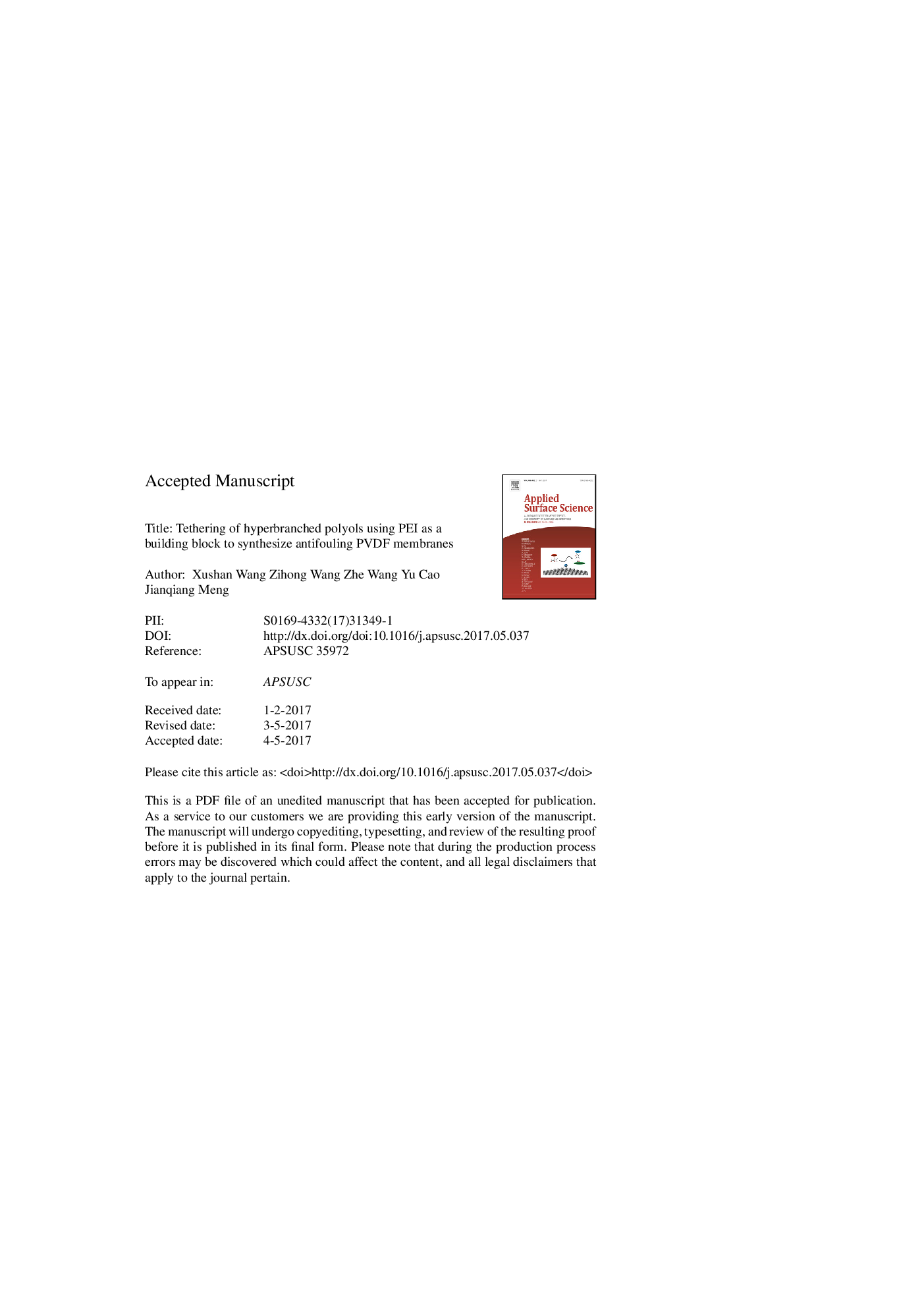| Article ID | Journal | Published Year | Pages | File Type |
|---|---|---|---|---|
| 5346925 | Applied Surface Science | 2017 | 35 Pages |
Abstract
Antifouling PVDF membranes were prepared by grafting hyperbranched polyols on the membrane surface via a three-step modification method. The membrane was first prepared by alkaline treatment to introduce alkenyl groups, then chemically immobilizing hyperbranched poly(ethyleneimine) (HPEI) on membrane surface through Michael reaction followed by ring opening reaction of the glycidol with amine groups. Chemical compositions, surface morphology and physicochemical properties of the original and modified membranes were characterized via attenuated total refection-Fourier transform infrared spectroscopy (ATR-FTIR), X-ray photoelectron spectroscopy (XPS), scanning electron microscopy (SEM), water contact angle (WCA) and zeta potential measurements. The antifouling property of the modified membrane was assessed by the static bovine serum albumin (BSA) and lysozyme (LZM) adsorption as well as cross-flow filtration of BSA aqueous solution. The results explicate that surface modification using hyperbranched polymers can alter membrane chemistry and morphology significantly. In contrast to the original PVDF membrane, the modified membrane shows superhydrophilic property and relatively high capability to resist nonspecific protein adsorption. Three HPEIs were used for modification and the obtained PVDFA-g-PG60,000 membrane has a static BSA protein adsorption of 45 μg/cm2 and shows the highest protein resistance. However, the PVDF-g-PG membrane is positively charged due to the unreacted amine groups. As a result, the PVDF-g-PG membranes also show high flux decline during the filtration of BSA aqueous solution due to the electrostatic interaction. In spite of that, the PVDF-g-PG membranes still maintain high flux recovery ratio and good washing properties.
Related Topics
Physical Sciences and Engineering
Chemistry
Physical and Theoretical Chemistry
Authors
Xushan Wang, Zihong Wang, Zhe Wang, Yu Cao, Jianqiang Meng,
